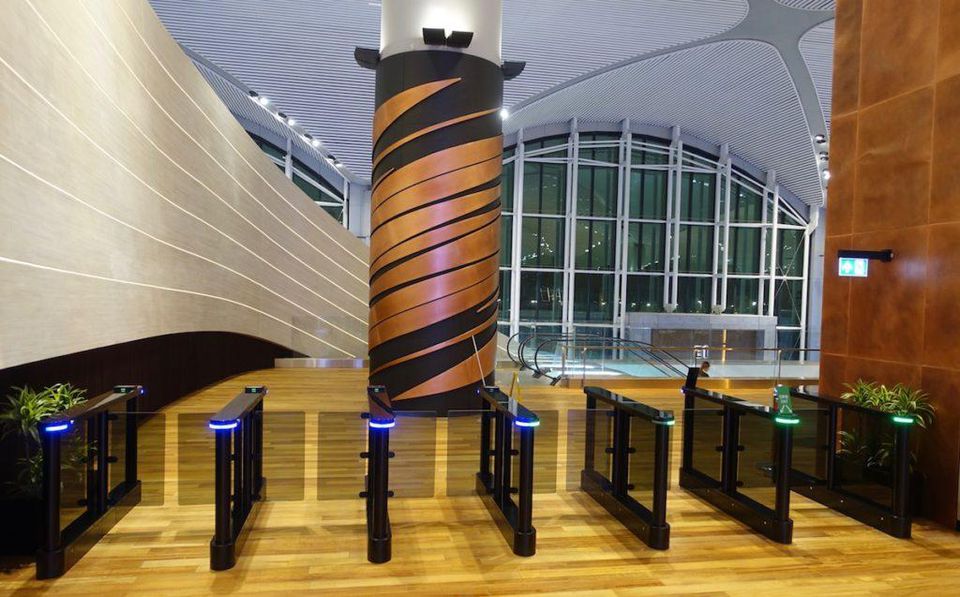
Everything You Need To Know About Istanbul Airport, Now The Largest In The Word
Travel and technology are deeply intertwined. Demands and pace are increasing as the ecosystem of air travel expands daily creating dizzying challenges and nearly insurmountable hurdles. Such was the situation with Istanbul Ataturk Airport. Considered as one of the world's busiest airports given its nearly 70 million annual passengers, the location had essentially reached its limit. But what has recently developed is not only a new, larger location but also that which is state-of-the-art in its technology offerings now making Ataturk Airport not only the largest but one of the first truly Smart Airports in the world.
Let's first start with a few vital data points. Unveiled only a few weeks ago, the new airport covers 76 million square meters which is more than 818 million square feet or 18,780 acres. It is said to be able to support the foot traffic of 90+ million passengers a year in phase one of its development. The Turkish Ministry of Tourism says that once the entire airport is completed, it will actually be able to handle 200 million passengers a year allowing it to claim title as the world’s biggest airport by passenger traffic. There will be 55,000 square meters (592,000 square feet) of Duty-Free shopping area, alone. To put all this in perspective, Hartsfield-Jackson International Airport in Atlanta, Georgia, currently the world’s busiest airport, clocks in at about 107 million passengers a year.
But such expanse does not come cheaply. Once the four phases are completed the total cost is projected to be $12 billion dollars. The country is betting big on return on this investment citing the growth of Turkish Airlines as the impetus behind the development of the new airport. Indeed, the company states that it flies to most countries than any other in the industry today and is growing.
The timing of taking on such a project in this era means that the country has the luxury of selecting the most current technology available in order to support customers and drive business.
According to Turkish Airlines New York General Manager Cenk Ocal, "Smart technology will dramatically change the way we run airports and fly. Istanbul Airport is equipped with cutting-edge technology that accelerates all processes at the airport and facilities traveling for its passengers." He says that in order to achieve this feat that various teams visited and researched the most advanced airports from around the world to improve upon and implement various tech solutions into their new airport.

Such examples include an A-CDM (Airport – Collaborative Decision Making) system has been implemented by which the stakeholders in the aviation sector like airport operators, airlines, ground handling companies, state authorities can share the data they have and allow them to make more accurate decisions by looking at the same operational picture.
In addition, A-SMGCS (Airport – Surface Movement and Guidance Control System) Level-4 is implemented, which was Level-2 in Ataturk International Airport. It is a system consisting of the integration of SMR (Surface Movement Radar) and MLAT (Multilateration) systems, which helps to keep the airport ground operations safe and fast, especially at low visibility conditions, at night and at low distances.
But what might please customers most is the biometric integrated passport control system is developed in coordination with the Turkish Police IT Department. The system is capable of validating passengers who hold a Turkish Passport, by using the fingerprint and face recognition biometric features. That means an increase of speed through such procedures.
Ocal adds, "Technology makes the airfield more intelligent, efficient and safe. For example, 'intelligent' lighting with more than 40,000 LED makes the visual guiding process easier and improves situational awareness by switching lights on and off according to information shared by airfield surveillance and aircraft tracking systems. This allows for optimized aircraft routing to and from gates, a more efficient traffic flow and an increase in safety." There will also be technology that assists in maximizing passenger flow and luggage handling.
However, it may be robots that will steal the show. Indeed, the Istanbul Airport will have Humanoid Infotainment Robots, which will meet & greet passengers, give general information about the available facilities, provide directions vocally and help improve overall customer experience.
In order to implement such technology, the collaborated with such technology companies as Micro Focus, Hitachi and Cisco, among others, to meet the vision.
Turkish Airlines own Business Lounge at the airport is deeply expanded as well. It now occupies has an approximate area of 18,375 square feet, seats 765 guests and features 13 private suites.